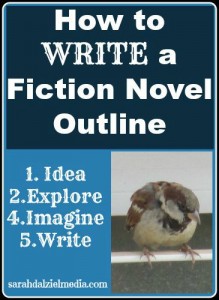As some of my previous posts may have shown, I enjoy outlining. It can be fun, and is a good way to test ideas to see if they actually have story potential, or are just being distractions. I have written fiction outlines that ranged from two thousand or more words to only five hundred words, and these were outlines for full length novels.
Use your Favorite Writing Tool:
The first step in any novel outline is to use your preferred writing tool. If you feel relaxed and get lots of ideas using a pen and paper, then use that. If you need distraction free writing, or like a certain writing program like ZenWriter or Scrivener, then use that. I like using Word, as I haven’t learned how to use Scrivener comfortably, though I’ve also outlined some ideas using pen and paper so that the idea would stop bugging me.
So, do you have your writing software or tools ready?
What is Your Plot?
This is what your outline will discover, but for this step you need to know two plot points. The Inciting Incident, what is the start of your story? It needs to grab reader’s attention, pull your protagonist into the adventure, and communicate why the reader should care. This can be a dream, a fight, or any other incident that changes the main characters life and sets them on the path to fulfilling the plot.
The second plot point you need is the ending. What will your protagonist accomplish, what does their end goal look like? In a romance that might be marrying the prince, in an adventure finding the gold, the sunken ship, or getting home from being pulled into another world. What your ending is matters just as much as your beginning, if not more. The difference between an unsatisfactory novel ending and a satisfactory one can be the difference between a happy reader and a discontent reader wondering what went wrong.
Now the fun part begins, how does your protagonist get from point A to point Z? This is the fun part of outlining as you note potential scenes, interactions, characters, and developments. Don’t censure your thoughts, write them down until you run out of plot points and ideas. Then, wait a day or two, and re-evaluate the outline. Make changes, and shift things around until it feels like it will work.
Plot Points Done?
Now that your points of conflict and development are plotted out, take a good look at that collection of words. That is your outline. Now remember, an outline is not set in stone. If your adventure protagonist decides to fall in love with someone, and that subplot was not in your outline, don’t worry. Add that sub-plot, note it in your outline, and keep writing. So have fun and write your novel, and if you end up skipping parts of the outline and adding other parts in, go ahead.
Having the outline makes sure that your ending lives up to the promise of your beginning. It’s not carved in stone.
Back To You:
Did you find this how-to helpful or just interesting? What do you think of outlining? Leave a comment.

Leave a Reply